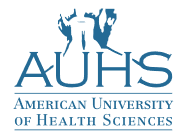Thoughts About Botox
By Grant Lackey, PharmD, FCSHP, Associate Dean and Professor of Clinical Toxicology
Botox®, Dysport®, and Xeomin® injections are popular cosmetic procedures. These injections contain a small amount of botulinum toxin. This is the same toxin that causes botulism, but these products contain much less of the toxin than is needed to cause disease in humans.
According to the American Society of Plastic Surgeons over 17 billion dollars was spent on cosmetic procedures in the United States in 2022. Breast augmentations, breast lifts, and buttock augmentation with fat grafting (“Brazilian Butt Lift” or “BBL”) were among the most popular cosmetic surgical procedures, Chemical peels, laser hair removal, and botulinum toxin type A injections, were also popular. These and other minimally invasive cosmetic procedures represent over 80% of the total cosmetic procedures performed in 2022. Overall, administration of botulinum toxin type A, including Botox®, Dysport®, and Xeomin® was the most popular minimally invasive cosmetic procedure performed.
Botulinum toxin type A is a specific medical formulation of botulinum toxin. This toxin is produced by selected species of Clostridium bacteria, including Clostridium botulinum, which are found throughout our environment. In humans, the toxin binds to nerve cells and prevents the release of certain chemicals that are involved in muscle contraction. In the presence of botulinum toxin, muscle cells are unable to contract, and they become paralyzed. When botulinum toxin type A is injected for cosmetic purposes, this muscle paralysis results in a temporary decrease in wrinkles and frown lines. The medical use of botulinum toxin type A dates to the 1940’s, when injections of the toxin were used as a treatment for strabismus (crossed eyes). Since then, the toxin has been used to treat muscle spasticity and excessive salivation in addition to cosmetic conditions.
Many types of Botulinum toxin are also the cause of botulism, a dangerous and life-threatening disease in humans.
- Foodborne botulism occurs after the consumption of botulism toxin in foods that have not been processed correctly. This most commonly occurs after ingestion of home-canned foods, as incorrect canning procedures can promote toxin growth and proliferation.
- Honey consumption by infants is a recognized cause of infant botulism, since more than half of all honey products may contain Clostridium botulinum. For this reason, infants should not consume honey for the first 12 months of life.
- Wound botulism can occur when open sores or cuts are contaminated with Clostridium botulinum bacteria. Intestinal botulism is a rare form of botulism that generally occurs in people with Crohn’s disease or other gastrointestinal illness.
All forms of botulism can cause severe symptoms including profound muscle weakness, double vision, and difficulty swallowing. If untreated, the disease can progress to respiratory failure and death. Even with treatment, the signs and symptoms of botulism can last for months and may result in permanent complications. There is an antidote for botulism called botulinum antitoxin. The antitoxin does not reverse muscle paralysis or other symptoms that have already occurred, but it can prevent the development of additional signs or symptoms of the disease.
Prevention Tips:
- Use search tools provided by the American Society of Plastic Surgeons or the American Academy of Dermatology to find a board-certified and experienced plastic surgeon or dermatologist to perform cosmetic injections of botulinum toxin type A.
- Avoid the use of botulinum toxin type A products that are unlicensed or not approved by the United States Food and Drug Administration (FDA).
- Avoid “Botox parties” where injections are done in homes or hotel rooms. While these parties may be legal (depending on the state), injections should only be performed by trained and licensed medical professionals using FDA-approved products.
- Do not feed honey to infants less than 12 months of age.
In summary, Botulinum toxin is a very potent poison, and exposure to small amounts of the toxin can cause severe disease in humans. The Centers for Disease Control and Prevention (CDC) considers botulism to be a high-priority bioterrorism agent. Even though botulism exposure is dangerous in small amounts, the amounts used for cosmetic procedures are significantly smaller than the amounts needed to cause disease in humans. For this reason, it is extremely rare for people to experience signs and symptoms of botulism after receiving injections of the medical formulations of botulinum toxin.
If you experience adverse or unexpected signs or symptoms after receiving botulinum toxin type A, contact Poison Control immediately for guidance. Call 1-800-222-1222 24 hours a day.
*Excerpts from the National Poison Control Center

